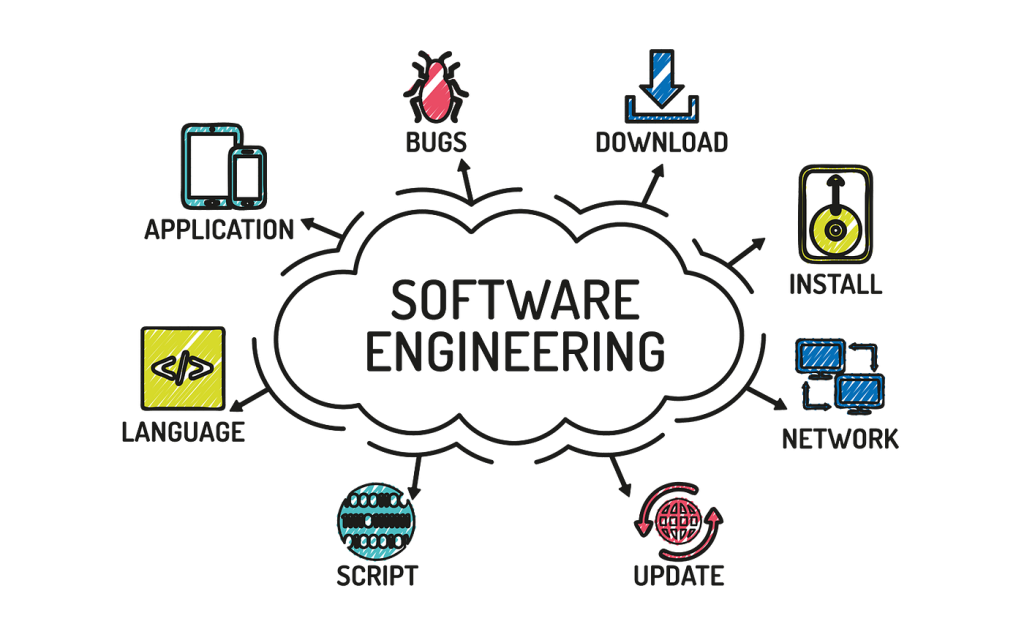JAKARTA, cssmayo.com – Software Engineering is more than writing code—it’s the discipline of designing, developing, testing, and maintaining systems that perform predictably under real-world conditions. In this guide, we’ll walk through the journey from an empty repository to a rock-solid production deployment, exploring key principles, methodologies, and hands-on tips to elevate your engineering practice.
Why Reliable Software Systems Matter
- Minimize Downtime: Production incidents erode user trust and incur financial losses.
- Scale Confidently: Predictable performance under load is critical for growth.
- Simplify Maintenance: Clean architectures and clear documentation reduce technical debt.
- Accelerate Time-to-Market: Automated pipelines and quality gates keep releases safe and fast.
Core Principles of Reliable Software Engineering
- Modularity and Separation of Concerns
- Break functionality into well-defined components or services.
- Facilitate independent development, testing, and deployment.
- Idempotence and State Management
- Ensure operations can be retried without side effects.
- Use immutable data structures or event sourcing where appropriate.
- Fault Tolerance and Graceful Degradation
- Implement circuit breakers, retries, and bulkheads.
- Provide degraded but functional user experiences during failures.
- Observability and Monitoring
- Instrument metrics (latency, error rates, throughput) and logs.
- Set up alerts and dashboards to detect anomalies early.
The Software Development Lifecycle (SDLC) Roadmap
- Requirements and Architecture
- Engage stakeholders to gather clear, testable requirements.
- Create high-level diagrams: component, data flow, and sequence.
- Design and Prototyping
- Draft API contracts, database schemas, and UI wireframes.
- Validate assumptions with lightweight prototypes or proof-of-concepts.
- Implementation
- Adopt coding standards and automated linters/formatters.
- Write unit tests alongside features (Test-Driven Development helps).
- Continuous Integration and Continuous Delivery (CI/CD)
- Automate builds, tests, and security scans on every commit.
- Deploy to staging environments for integration and performance testing.
- Testing and Quality Assurance
- Functional Tests: verify end-to-end flows.
- Performance Tests: simulate load and stress scenarios.
- Chaos Engineering: introduce controlled failures to harden systems.
- Deployment and Release Management
- Use blue/green or canary deployments to minimize risk.
- Automate rollback procedures in case of regressions.
- Maintenance and Iteration
- Conduct regular code reviews and dependency upgrades.
- Refactor monoliths into microservices or modular libraries when needed.
Tools and Technologies to Accelerate Reliability
- Version Control: Git + branching strategies (GitFlow, trunk-based).
- Build & CI/CD: Jenkins, GitHub Actions, GitLab CI, CircleCI.
- Containerization & Orchestration: Docker, Kubernetes, Nomad.
- Testing Frameworks: JUnit, pytest, Jest, Selenium.
- Monitoring & Observability: Prometheus, Grafana, Datadog, ELK Stack.
- Infrastructure as Code: Terraform, Pulumi, AWS CloudFormation.
Real-World Case Study: Scaling a Payment Gateway
A fintech startup needed 99.99% uptime for its payment API. They:
- Migrated from a monolithic codebase to microservices for authorization, billing, and notifications.
- Introduced circuit breakers with Hystrix and rate limiting via API Gateway.
- Automated end-to-end tests in CI and used chaos-testing in staging.
Result: API latency dropped by 40%, and service interruptions fell from four per quarter to zero.
Actionable Tips for Aspiring Heroic Engineers
- Start Small, Iterate Fast: Validate designs with spikes before full builds.
- Invest in Automated Tests: Aim for high coverage on critical paths, not vanity metrics.
- Embrace Pair Programming: Shared ownership accelerates knowledge transfer and catches defects early.
- Document Continuously: Update architecture diagrams and README files alongside code changes.
- Conduct Blameless Postmortems: Learn from outages and publish actionable remediation plans.
Best Practices for Sustained Reliability
- Define Service-Level Objectives (SLOs) and Error Budgets: Quantify acceptable failure rates.
- Implement Feature Flags: Roll out new features gradually and disable them on the fly.
- Rotate Secrets and Credentials: Use a vault solution (e.g., HashiCorp Vault, AWS Secrets Manager).
- Perform Regular Chaos Exercises: Test resilience under real-world failure scenarios.
- Foster a Culture of Quality: Reward early bug detection and continuous improvement.
Conclusion
Building reliable software systems is an ongoing journey that blends solid engineering fundamentals, modern tooling, and a culture of learning. By following this end-to-end roadmap—from requirements to Observability—you’ll transform from zero to hero in crafting systems that users and Stakeholders can trust. Embrace Automation, plan for failure, and Continuously refine your processes to stay ahead in an ever-evolving tech landscape.
Elevate Your Competence: Uncover Our Insights on Techno
Read Our Most Recent Article About Tech Recruiting!

